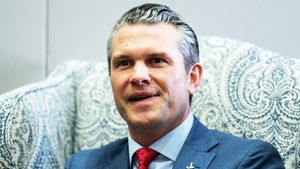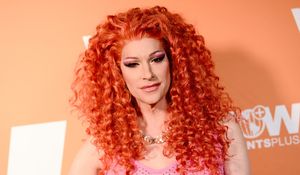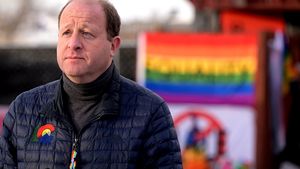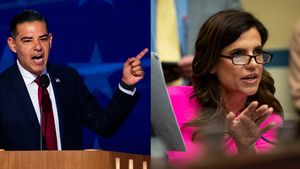Dear Reader,
It's an honor to write to you as the guest editors of Out's October issue. For those of you who don't know us, we are artists and filmmakers. We are both trans, but in opposite directions -- Zackary is a trans woman, and Rhys is a trans man. We both moved from New York City to Los Angeles to attend CalArts, and we both transitioned at age 25. We have many things in common, but we are also very different. We both identify as queer but have been L, G and/or B at different points in our lives. We are collaborators and colleagues, and were formerly romantic partners. Our new book, Relationship, based on the photographic series we premiered at the 2014 Whitney Biennial, documents our six-year romantic relationship and our gender transitions.
Today we live in Los Angeles and make the shadow of Hollywood our canvas, using palm fronds and bougainvillea as paintbrushes. We like to keep one foot in the art world and one foot in film and television. We are producers on Amazon's Transparent, brought on in the early days by show creator Jill Soloway to work on the pilot. Rhys makes the title sequence for Transparent (known for its voguing bar mitzvah boy), and you may recognize Zackary as an I Am Cait cast member. Last year, our Web series about trans lives, This Is Me, was nominated for an Emmy. We work in photography and visual art but often use cinematic language and narrative construction as methodologies.
Above all, our ethos is one of uncompromised representation. The intersection of trans representation with the fight for trans equality is our guiding principle, and we're at the beginning of a long game that's linked to a timely and larger conversation about diversity in media and in labor. If trans stories are important for all people, exemplifying a journey to live authentically, then trans employment in an industry like Hollywood becomes a symbol of possibility for anyone who's been historically excluded.
Related | Meet the Trans Influencers of Hollywood
Though they are different, the struggles of LGB people and trans people have more in common than what's often recognized. The oppression of cisgender LGB people is typically rooted in gender. Throughout history and currently across the globe, the gays and lesbians subjected to discrimination and violence are, more often than not, targeted because of their insubordinance to gender codes. Swishy queens, gay men with "feminine" mannerisms or attributes, bulldaggers, studs, and butch lesbians are all among the many individuals who have blurred the gender binary and paid the price for it. In addition to that, many trans people identify as gay, lesbian, bi, or queer and therefore have an overlapping experience with cis LGB folks (read more about that in our special Surveillance section on how to date a trans person, on page 85).
In other words, trans issues are gay issues, transphobia is homophobia, and homophobia is sexism.
In these pages, you'll find a look back to the roots of California counterculture led by performance art legend Ron Athey (page 40); an investigative story on the pharmaceutical industry's nebulous relationship to transgender hormone therapy, written by leading trans journalist Diana Tourjee (page 62); a profile on trans hero and HIV activist Sabel Samone-Loreca penned by non-binary writer and activist Grace Dunham (page 44); and much more.
Trans people need the alliances of our LGB brothers and sisters. We look forward to continuing our shared goal of progress and hope we can rejoice in our collective cultural riches along the way. And we hope that you will enjoy this issue as much as we do.
In solidarity,
Zackary Drucker and Rhys Ernst
Like what you see here? Subscribe and be the first to receive the latest issue of Out. Subscribe to print here and receive a complimentary digital subscription.








































































